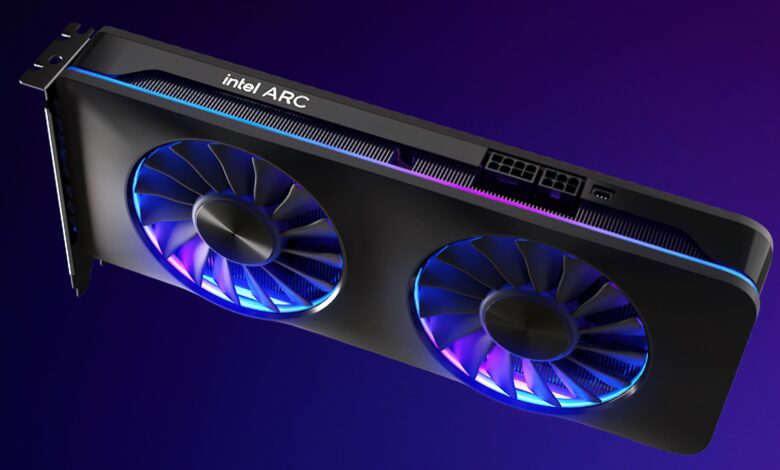7 Reasons Why the Intel Arc GPU is a Budget Gamer’s Dream

With the launch of Intel’s new discrete Arc GPUs, budget-minded PC gamers finally have another compelling graphics card option to consider. While Nvidia and AMD have dominated the market for years, Intel is looking to disrupt things with their Arc lineup. These new GPUs promise impressive performance at affordable prices, but can they really deliver the goods?
For those building a new system, the release of the Intel Arc GPU delivered a future-proofed gaming experience for hundreds less than rival cards. For budget shoppers, the potential of Arc Graphics is certainly exciting.
Let’s explore 7 key reasons why the Intel Arc is a dream come true for budget gamers.
1. Competitive Pricing
Hands-down, one of the biggest draws of Intel’s Arc GPUs is their competitive pricing structure. As the first discrete graphics cards from Intel, they are priced very aggressively to try and gain market share. The entry-level Arc A380, for example, starts at just $130, undercutting similar offerings from Nvidia and AMD.
This puts high-performance gaming within reach of those on a strict budget. Intel has stated that its goal is to offer exceptional value compared to rival products, and early benchmarks seem to back this up. Getting next-gen gaming power for $100–200 less than alternatives could be a real game-changer.
2. Impressive Performance for the Money
Early benchmarks of Intel Arc GPUs have been quite promising. The Arc A380, in particular, delivers gaming performance on par with Nvidia’s GTX 1650 at a lower price point. That kind of value makes the A380 an instant hit among budget PC builders. Even higher-end Arc models like the A750 rival the RTX 3060 in terms of power.
Considering their aggressive pricing, that makes Intel offerings very compelling options pound-for-pound. Getting smooth 1080p gaming at 60fps or more on modern titles for under $300 total with a CPU+GPU combo could win over many budget shoppers.
3. XeSS Upscaling Tech Rivals DLSS
One of the standout features of Intel’s Arc lineup is their XeSS upscaling technology, which aims to compete directly with Nvidia’s acclaimed DLSS.
- XeSS uses machine learning to boost frame rates by rendering at a lower native resolution and reconstructing the final image. It delivers image quality on par with DLSS while using less VRAM.
- This helps Intel Arc GPUs maintain higher framerates even at higher resolutions.
- With more games adding XeSS support, it maximizes the performance of Intel’s graphics chips.
For budget players, features like XeSS that boost performance for “free” are extremely valuable.
4. Future-Proof Hardware Features
Though Intel is new to discrete graphics, the Arc lineup incorporates many modern GPU technologies to keep them relevant for years.
- This includes support for real-time ray tracing effects as well as AV1 video decoding, which offers power savings.
- Higher-end Arc models also include cutting-edge GDDR6 memory. These future-proofing features indicate Intel Arc cards should age well as games demand more.
- Budget buyers who keep cards for 3–4 years will get their money’s worth before needing an upgrade.
The Arc’s modern design also makes them well-suited to evolve over time via driver optimizations as Intel refines their graphics efforts.
5. Software Innovation with Xe Core
The graphics architecture powering Intel Arc GPUs incorporates some innovative software features as well. The Xe Core platform is designed around concepts like extensibility, which allows new features to be added via driver updates long after purchase. This ensures AR cards stay fresh over their lifespan.
Intel is also pioneering new APIs like Vector Neural Network Instructions that can supercharge AI and machine learning tasks on Arc GPUs. As these new software capabilities mature, Arc owners may unlock hidden performance boosts through simple driver downloads. Such future-proofing helps extend the value proposition over time.
6. 12th Gen Intel CPU Synergy
The deep integration between Intel CPUs and Intel Arc GPUs provides several performance advantages out of the box.
- Intel’s Deep Link technology allows certain workloads, like encoding, to utilize both the CPU and GPU simultaneously. This results in faster render and export times for creative tasks. Gamers also benefit from Deep Link, as it allows the CPU to offload some physics calculations and AI processing to the GPU, reducing the load on the CPU cores. This extra headroom allows the CPU to maintain higher clocks for improved minimum framerates.
- Driver-level optimizations also enhance the experience. Intel GPU drivers are designed hand-in-hand with the CPU microcode to minimize overhead during data transfers between the chips. This reduces latency for operations like loading textures.
- Game levels stream quicker, and frame pacing is more consistent as a result. The drivers also implement frame scheduling intelligently, prioritizing workloads to maximize throughput on both the CPU and GPU.
- Advanced features like variable-rate shading can be applied more efficiently across Intel’s integrated hardware as well. With VRS, certain less-noticeable areas of the screen can be shaded at a lower quality to boost performance.
- For budget builders, this optimized synergy translates to higher overall performance than pieced-together systems with non-native CPU+GPU pairings, for a lower total investment. The Arc is truly designed from the ground up to maximize value on Intel platforms.
Being able to coordinate this complex operation directly between the CPU and GPU results in higher VRS performance gains than a mixed CPU and GPU setup from competing vendors.
7. Expanding Software Library
Since the release of the Intel Arc Gpu, Intel has been partnering with top game developers to rapidly expand XeSS and driver support. Popular titles like Hitman 3 and Ghostwire Tokyo already support XeSS image reconstruction. Intel also aims to have day-1 driver support for all major game releases and applications going forward. As the Arc install base grows, so too will developer interest in optimization.
Intel is also contributing to open-source graphics standards to push innovation. If software support materializes as promised, Arc cards will remain highly relevant for years to come.
Conclusion
Intel’s Arc GPUs offer compelling reasons for budget-focused PC gamers to consider them. With competitive pricing, promising performance, and features like XeSS that boost longevity, the Arc lineup aims to deliver exceptional value. Intel’s integration with 12th-generation CPUs and ongoing software optimizations also bode well for smooth gaming experiences. Intel Arc could emerge as a leading budget-friendly option capable of 1080p gaming on modern titles.
Read More: 8 Reasons Why Intel vPro Chipsets Are Worth the Investment




